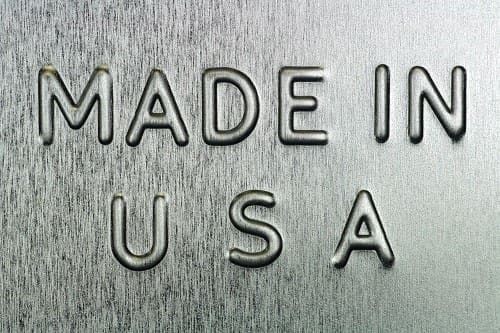
Made in America: Real Progress or Manufactured Hype?
Made in America. At one time, those words stamped on a product meant you, the buyer, were getting a quality-made product manufactured by trained, well-paid American workers. However, in the last few decades, that phrase has not only vanished from a number of products, it’s also lost its luster as more and more Americans have chosen to purchase cheaper foreign goods.
Made in America has slowly been coming back into play in recent years. Wal-Mart famously uses the slogan in its advertising and in-store signage. President Donald Trump made it part of his 2016 campaign, promising to bring manufacturing jobs back from overseas (a process called “reshoring”). The White House held a Made in America event last summer. There’s even a nationwide organization with the stated purpose of getting more Americans to buy products made in the U.S.A.
As Dr. Phil might ask, “How’s that worked out?” Has Made in America manufactured a comeback, or is it just a lot of clever advertising and branding?
There is a market for made in America goods. According to a Consumer Reports survey, 8 out of 10 Americans say they prefer to buy American-made products instead of imported ones. The same survey indicates 60 percent say they’re willing to pay up to 10 percent more to buy an American product. Nevertheless, Consumer Reports reveals a lot of confusion in the public about what is really made in America and what isn’t.
For example, many American-based car manufacturers make their cars overseas, while many foreign car companies make cars for the American market here in the U.S. If you simply go by the nameplate and buy a car from an American company, you may really be buying a car put together overseas, And, vice-versa, if you purchase a car or truck with a foreign nameplate, you may be putting more Americans to work.
According to the Reshoring Initiative, government and private reshoring efforts brought 171,000 overseas manufacturing jobs back to the U.S. in 2017. That’s up 2,800 percent since 2010. The group also says those 171,000 jobs represent 90 percent of the total 189,000 manufacturing jobs added in the country last year. That’s in stark contrast to the early years of the 21st century, when American manufacturers were sending an estimated average of 240,000 jobs overseas between 2000 and 2003.
Domestic factories have gained – and kept – a solid momentum of job creation. American manufacturers added 24,000 new jobs in April 2018, 2,000 more than in March. These new jobs greatly aid the local and the national economy. Manufacturing employs nearly nine percent of all American workers, so when manufacturing is ailing, it has a large impact everywhere.
Several factors have stemmed the flow of manufacturing jobs overseas and have helped bring such jobs back to the U.S. One of the biggest is proximity to customers. Manufacturing close to a customer base helps lower shipping costs and can make a company more flexible in response to market trends. Branding and imaging are other key factors, enabling manufacturers to build good will and take advantage of patriotic sentiment.
It also draws a stark, positive comparison between a domestic company that manufacturers at home versus a competitor that makes its products overseas. Finally, government incentives and tax breaks have caused companies to rethink sending manufacturing jobs overseas and instead to focus on bringing them back or keeping them in the U.S.
So, regarding the question posed in the headline … Made in America: Real Progress or Manufactured Hype? Thus far the numbers point to solid progress, which means more jobs for U.S. workers, more choices for American consumers and a better image for domestic manufacturers.
- What Is An Invoice Factoring Broker? - July 17, 2022
- 7 Tips for Buying Out a Business Partner or Majority Owner - May 13, 2022
- 6 Leadership Secrets Every Small Business Owner Should Know - December 9, 2021

